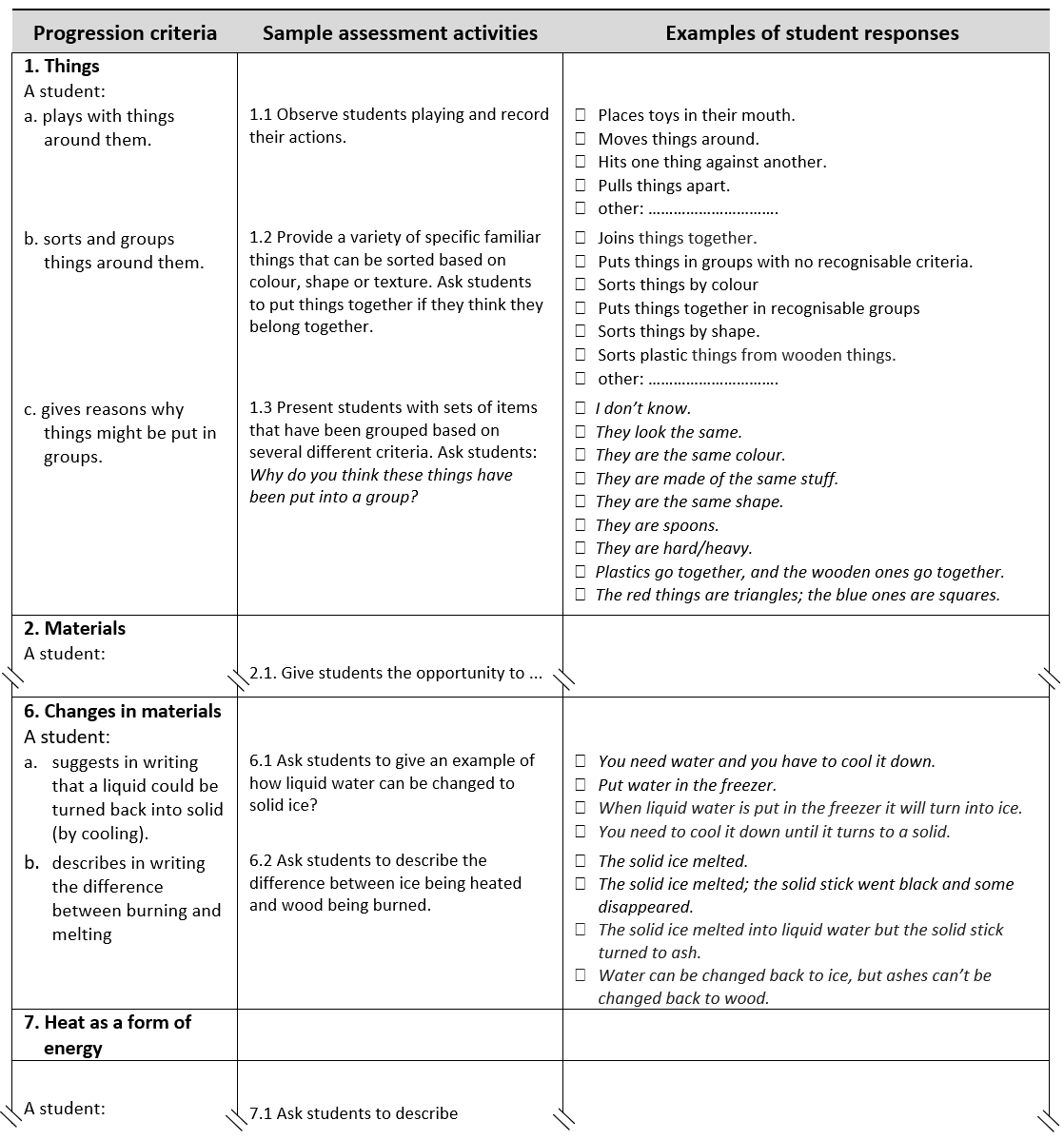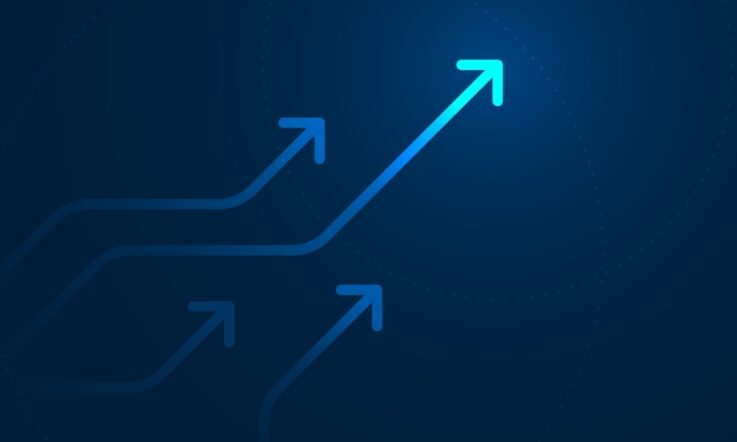Identifying student learning needs to make informed decisions about your next steps in teaching is important for improving student outcomes. A key tool for achieving this in the classroom is the use of learning progressions. In this article, academics from the Science, Information and Communication Technology, and Mathematics Education for Rural and Regional Australia (SiMERR) National Research Centre at the University of New England (UNE) share how the chemical science learning progression they constructed might be implemented in the classroom.
Research on learning progressions is experiencing strong attention within Australia (e.g., Oates & Seah, 2021) and overseas (Duschl et al., 2011). Learning progressions are seen as useful structures for selecting and sequencing key components of an ‘intended curriculum’ (Confrey et al., 2014).
In science, they have been defined as ‘descriptions of successively more sophisticated ways of reasoning within a content domain based on research syntheses and conceptual analyses’ (Smith et al., 2006). But this description raises two important questions: (i) What is meant by ‘more sophisticated ways of reasoning’? and (ii) How might such a sequence be determined?
Developing a progression in chemical science
These two questions were addressed in our recent Australian Journal of Education article (Panizzon et al., 2021) in which we outlined detailed research undertaken to construct a learning progression in chemical science from Foundation to Year 6. The work was guided by the Australian Curriculum: Science (ACARA, 2015). However, the progression is currently being extended to Year 10.
A crucial resource in identifying key concepts in the chemical science learning journey was the wealth of conceptual change research available. Most useful in sequencing the learning progression was the framework offered by the Structure of the Observed Learning Outcome (SOLO) model (Biggs & Collis, 1991), which was applied to guide the sequence of conceptual growth across the years of schooling.
We encourage teachers to read more about the SOLO Model as it describes different modes of functioning involved in conceptual development. SOLO provides a useful, empirically validated and a highly practical lens through which to assess the level of students’ growth through their responses.
While the paper theoretically substantiated the rigor underpinning the development of our learning progression, it did not address how the progression might be implemented in the classroom. It is this aspect that we focus on below.
Conceptual growth through learning progressions
To make a real difference to the way students learn science, we think it is important to link cognitive growth to learning progressions through formative assessment in everyday practice. Teachers can enhance student learning by recognising and adjusting practice to address two understandings about student learning:
- Concepts can be understood at different levels; and,
- Earlier, basic knowledge is a crucial pre-requisite for attaining at a later stage more detailed and abstract knowledge.
Our learning progression signals the experience and steps that students are likely to need in learning about chemical science to be successful in later years. The approach we are suggesting aims to unlock what students are thinking and to identify the understanding, knowledge and skills they have achieved.
The purpose is to help teachers become more aware of the meaningful steps students take in learning chemical science – to illuminate these key steps. At the same time, teachers will be able to identify the level of knowledge and understanding that students achieve through the responses that students might typically provide to the assessment activities in the progression.
Table 1 provides excerpts from our Chemical Science assessment progression (Panizzon et al., 2021). The learning progression criteria are provided in column one, and sample assessment activities along with potential student responses in columns two and three, respectively.
Table 1. Extracts from Chemical Science assessment progression

It is important to note that the assessment activities are not designed to be attached to any particular year of schooling, stage of learning or age of student. They offer a formative role for the teacher to use at any time to determine the conceptual development of a student in relation to the chemistry understanding.
The progression criteria (column one) are the steps that we believe students experience in learning about chemical science. We acknowledge that students may take different paths, and some students may skip some steps entirely. However, recognition of the steps helps maintain focus on each student’s progress. Later in our research, we hope to be able to track student progress over several years of schooling.
The assessment activities (column two) are suggested classroom activities that provide stimulus for genuine student responses – these are open tasks designed to generate a range of levels of student responses.
The example student responses (column three) are typical of what students might give in an assessment activity. The responses are not intended as either correct or incorrect answers, but rather to simulate the type of response that demonstrates their level of knowledge and understanding of the concept being taught and learned.
Operationalising learning progressions through teaching
As highlighted in Table 1, criteria one, what might seem like a simple activity in, say, a kindergarten classroom, might well be an important step (even a strong basis upon which to build future learning) in students’ progression towards higher-order learning in the future.
We expect our completed progression will also provide insights into areas of learning that may not have been identified in current science curricula. If so, this might help explain some difficulties students encounter, such as gaps in a learning journey. We also expect our progression will reinforce good teaching practice and encourage teachers to explore the ideas they teach more deeply with their students.
Next steps
The Chemical Science learning progression is undergoing further refinement, including extension for Years 7-10. We are keen to work with early years and primary and secondary teachers to explore the integrity of the Chemical Science progression so as to fine-tune the developmental sequence. Please contact Professor John Pegg at jpegg@une.edu.au if interested.
References
Australian Curriculum, Assessment and Reporting Authority [ACARA]. (2015). Australian Curriculum: Science. https://www.australiancurriculum.edu.au/f-10-curriculum/science/
Oates, G. & Seah, R. (2021). Learning progressions/trajectories in mathematics and science education: A case for evidence-based curricula reform? Guest editorial. Australian Journal of Education. 65(3), 223–226. https://doi.org/10.1177/00049441211055521
Biggs, J., & Collis, K. (1991). Multimodal learning and the quality of intelligent behaviour. In H. Rowe (Ed.). Intelligence: Reconceptualization and measurement (pp. 56–76). Psychology Press. https://www.taylorfrancis.com/books/mono/10.4324/9780203772560/intelligence-helga-rowe
Confrey, J., Maloney, A. P., & Corley, D. (2014). Learning trajectories: A framework for connecting standards with curriculum. ZDM Mathematics Education, 46(5), 719–733. https://doi.org/10.1007/s11858-014-0598-7
Duschl, R., Maeng, S., & Sezen, A. (2011). Learning progressions and teaching sequences: A review and analysis. Studies in Science Education, 47(2), 123–182. https://doi.org/10.1080/03057267.2011.604476
Panizzon, D., Pegg, J., Arthur, D., & McCloughan, G. (2021). Designing a developmental progression to assess students’ conceptual understandings by focusing on the language demands in Science. Australian Journal of Education, 65(3), 265-279. https://doi.org/10.1177/00049441211036518
Smith, C.L., Wiser, M., Anderson, C. W., & Krajcik, J. (2006). Implications for children’s learning for assessment: A proposed learning progression for matter and the atomic molecular theory. Measurement, 14(1&2), 1–98. https://doi.org/10.1080/15366367.2006.9678570
The author’s Australian Journal of Education article, Designing a developmental progression to assess students’ conceptual understandings by focusing on the language demands in Science, has been made available to freely access from 7 March 2022 for a limited time.



